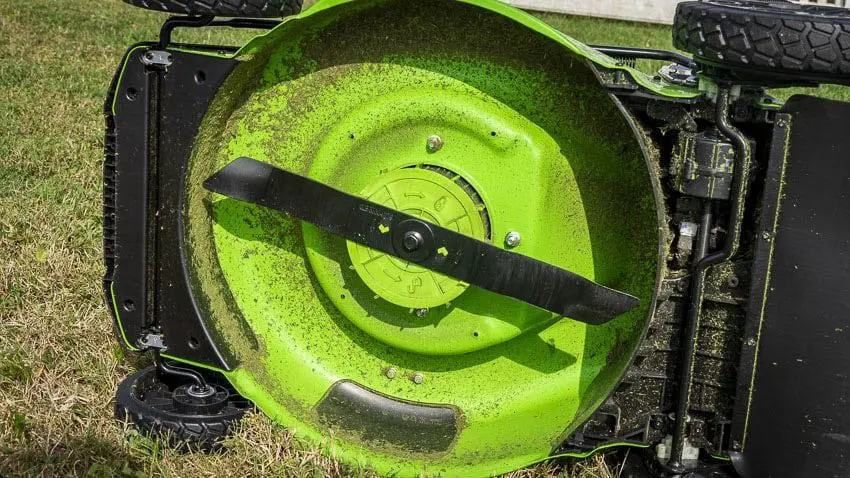Here in central Florida, nearly everybody mulches grass clippings. With St. Augustine, Zoysia, and Bahiagrass dominating our landscapes, it simply grows so fast that bagging and side discharging are usually impractical. But for much of the country, mulching grass is an option rather than a necessity. To get the greatest benefits for your lawn, there’s a right way to do it.
How to Set Up Your Lawn Mower for Mulching
Most walk-behind lawn mowers (push and self-propelled) come with a mulching option standard. To use it, start by taking the bagger and side discharge chute off if either one is installed.
At the back of the mower where the bagger was, lift up the rear guard (usually a plastic, spring-loaded door) and insert the mulching plug that came with your mower into the chute where grass normally travels into the bag.
Note: If your mower didn’t come with a mulching plug, many brands make mulching kits you can buy separately.

The side discharge hole (not all mowers have one) should also have a spring-loaded door that closes it up. You shouldn’t need to do anything else with it once the side discharge chute is off.
That’s it—you’re ready to mulch!
Preparing Your Lawn for Mulching Grass
Cut the Right Amount
Lawn mowers mulch grass by lifting the grass clippings into the deck and cutting them into fine pieces before they drop back into the ground. Because they need to be cut many more times than they do for bagging and side discharge, airflow is critical to the process. Airflow is created by the spinning blade, so keeping the RPMs high is important.

In general, try to mulch when you’re taking off no more than 2 inches of grass for the best results. That lets the blade speed stay up on just about any gas or battery-powered mower and get those fine pieces that send nutrients back into your lawn.

During high growth seasons (~8 months out of the year in Florida), you might need to mow every 5 days instead of once a week.
But What if the Lawn is Already Too High?
There’s ideal and then there’s practical when it comes to mulching grass. Ideally, you can cut your grass in stages—cut at the tallest height for your mower first, then drop it down another inch or two and do it again.

That’s a doable first step if you’re going to keep the lawn under control from there.
If your reality is that you’re just going to have to cut more than 2 inches at a time, you can still mulch. Be prepared to slow down or cut half-swaths in thicker sections. Remember, the goal is to keep your blade speed high, so whatever it takes to do that is key.
Cut When It’s Dry
You’ll typically get much better mulching results if you can cut when your grass is dry. That leaves the clippings lighter so they stay up in the deck longer and don’t stick to the sides.

Sometimes you don’t have a choice. During the summer, our grass takes forever to dry thanks to high humidity. And right about the time it does, sea breeze thunderstorms are about to unleash impressively high amounts of rain.
Mulching grass when it’s wet means the blade can’t cut the clippings as small before they drop out. And the wetter the grass, the more challenging it becomes, especially for battery-powered lawn mowers. If you have a choice between mowing wet grass and damp grass, go with damp.
Additional Tips for Mulching Grass
Sharpen Your Blade
Lawn mowers are powerful tools and they can still chop grass down with a dull blade. That doesn’t mean it’s doing a good job, though.
Keeping your blade sharp ensures that it slices the clippings better and keeps its RPMs as high as possible.

Change the Blade
Check to see what blade came on your mower. Often, you can replace the stock blade with a high-lift or mulching-specific blade to get even better results.
Mind Your Watering Schedule
During dry seasons when you water the lawn, try to cut the day before you water or the day of but before the sprinklers come on. You’ll be cutting when the grass is dry and you’ll immediately water in those nutrients the mulching process puts back in your lawn.
Like the mower we used in the photos? It’s a 60V self-propelled mower from Greenworks that we highly recommend. Check out our review or pick one up for yourself at Home Depot!


